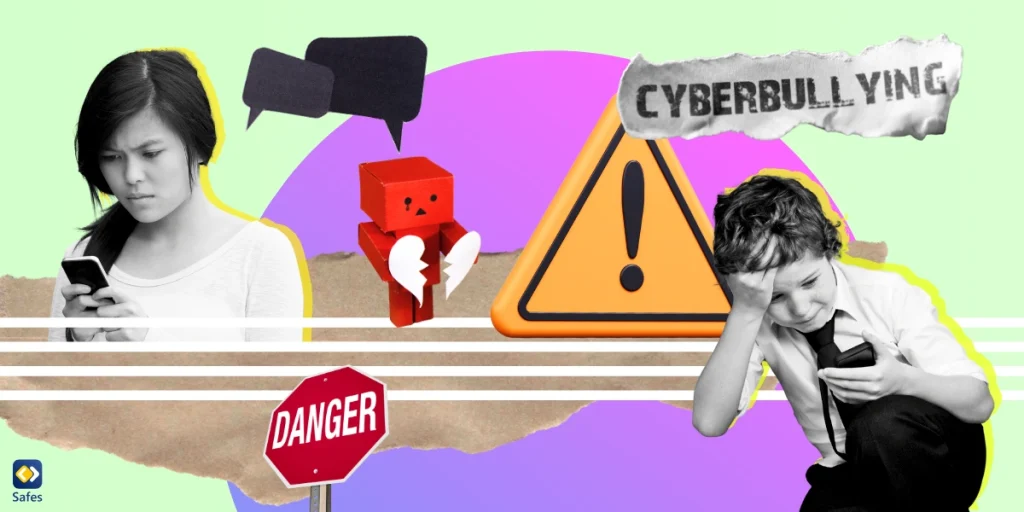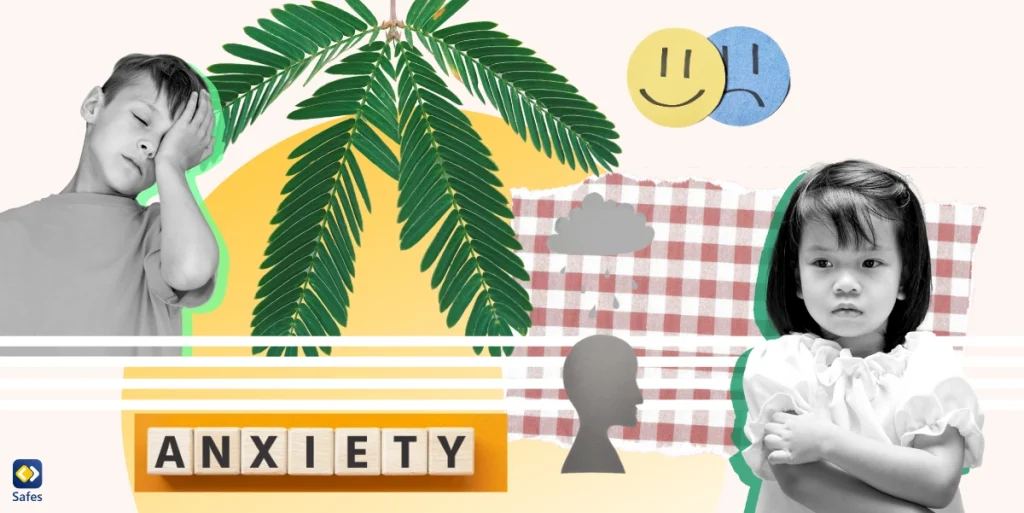In a world increasingly dominated by digital interactions, the distinction between traditional bullying and its cyber counterpart is crucial. While both share commonalities, the mediums and dynamics differ significantly. From the physical space of schools and workplaces to the vast digital realm of social media, messaging apps, and online forums, the face of bullying has evolved. A 2021 government report stated that approximately 16% of high school students were cyberbullied that year. This blog post explores the nuances that set bullying and cyberbullying apart, delving into their mediums, the nature of harassment, and the prevalence of cyberbullying across various online platforms. Understanding these differences is fundamental in addressing the challenges posed by both forms of aggression and fostering a safer and more compassionate digital landscape. Let’s start with a simple question: What is cyberbullying?
Download and Start Your Free Trial of the Safes Parental Control App
Difference Between Bullying and Cyberbullying
Bullying and cyberbullying share similarities, but they differ in their mediums and the nature of the harassment. Here are the key distinctions between bullying and cyberbullying:
Medium of Communication:
- Bullying: Traditional bullying typically occurs face-to-face, whether in schools, workplaces, or communities. It involves direct interactions between the bully and the victim, such as physical aggression, verbal taunts, or social exclusion within a physical space.
- Cyberbullying: In contrast, cyberbullying takes place in the digital realm. It involves the use of electronic communication tools, such as social media, messaging apps, emails, or online forums, to perpetrate acts of harassment and aggression.
Anonymity and Disinhibition:
- Bullying: Bullies in traditional settings are less likely to be anonymous, as their actions occur within a known community. There is typically a face-to-face interaction, and the bully may be identifiable by the victim and others in the immediate surroundings.
- Cyberbullying: The online environment provides a degree of anonymity, allowing perpetrators to conceal their identities. This anonymity can embolden individuals to engage in more aggressive behaviors that they might hesitate to do in person, contributing to the persistence and intensity of cyberbullying.
Reach and Permanence:
- Bullying: Traditional bullying tends to have a limited audience, usually confined to a specific physical location. The impact may be felt within a local community, such as a school or workplace.
- Cyberbullying: The digital nature of cyberbullying means that harmful messages, images, or rumors can spread rapidly and reach a wide audience. Additionally, digital content can be permanent and difficult to erase, intensifying the long-term effects of cyberbullying on victims.
24/7 Accessibility:
- Bullying: Traditional bullying is often confined to specific times and locations, such as during school hours or within a particular neighborhood.
- Cyberbullying: The online environment operates 24/7, making individuals susceptible to harassment at any time. Cyberbullying can infiltrate a person’s life beyond the confines of a school or workplace, impacting them even in their private spaces.
Nature of Harassment:
- Bullying: Traditional bullying may involve physical aggression, verbal abuse, or social exclusion within the immediate physical environment.
- Cyberbullying: The nature of cyberbullying includes various forms such as verbal harassment, spreading rumors, social exclusion online, sending threatening messages, and sharing inappropriate content digitally.

What Platforms Is Cyberbullying More Prevalent?
Even though there are cyberbullying laws in place, cyberbullying can occur on a wide range of online platforms, as long as there is a means for electronic communication. Cyberbullying statistics show us that the prevalence of cyberbullying may vary across platforms, and it can happen on social media, messaging apps, online forums, gaming platforms, and more. Here are some of the platforms where cyberbullying commonly occurs:
1. Social Media
Social media platforms are popular spaces for cyberbullying due to their widespread use. Harassment can take the form of public comments, private messages, or the creation of fake profiles to impersonate and target individuals.
2. Messaging Apps
Private messaging apps such as the Whisper app are often used for cyberbullying, allowing individuals to send hurtful messages directly to the victim. These messages can be more personal and may involve threats or verbal abuse. Even Google Docs Chat can be used to facilitate cyberbullying.
3. Online Gaming Platforms
Online gaming environments can be breeding grounds for cyberbullying, especially through in-game chat, messages, or even voice communication. Insults, threats, and harassment are unfortunately common in this context.
4. Forums and Message Boards
Online discussion platforms provide anonymity, making it easier for individuals to engage in cyberbullying. Negative comments, personal attacks, and spreading rumors can occur in these virtual spaces.
5. Email and Online Communication
Cyberbullying can also happen through email, where individuals may receive threatening or offensive messages. Online communication tools used for work or personal interactions can also be exploited for harassment.
6. Video-Sharing Platforms
Video-sharing platforms can be venues for cyberbullying through comments on videos or even through the creation of derogatory content targeting specific individuals.
7. Photo and Video Sharing Apps
Apps focused on sharing photos and videos may witness cyberbullying through the sharing of inappropriate content, the creation of fake accounts, or hurtful comments on posts.

How Can Parents Prevent Cyberbullying?
Preventing cyberbullying requires a proactive and collaborative approach involving parents, educators, and the community. Here are some strategies parents can implement to help prevent cyberbullying and support their children:
1. Open Communication
Foster a relationship built on trust and open communication. Encourage your child to share their online experiences, both positive and negative, without fear of judgment.
2. Educate about Cyberbullying
Ensure your child understands what cyberbullying is and the various forms it can take. Discuss the potential consequences of cyberbullying whether engaging in or being a victim of it.
3. Set Clear Expectations and Rules
Establish guidelines for responsible online behavior. Emphasize the importance of treating others with respect, refraining from sharing hurtful content, and reporting any incidents of cyberbullying.
4. Teach Digital Literacy
Help your child develop strong digital literacy skills. This includes understanding the permanence of online content, recognizing fake profiles or malicious behavior, and knowing how to navigate privacy settings.
5. Set Screen Time Limits
Establish reasonable screen time limits to ensure a healthy balance between online and offline activities. Excessive screen time can increase the risk of exposure to cyberbullying incidents. You can set screen time limits, block apps, filter inappropriate keywords and URLs, track your child’s location in real-time, and more using Safes, our parental control app. Safes is available on iOS and Android. Sign up for a free trial today and take the first step towards a safer online experience for your children.
6. Collaborate with Schools
Work closely with your child’s school to address and prevent cyberbullying. Stay informed about their policies and procedures and communicate regularly with teachers and administrators. Safes School is a special variation of our Safes parental control app designed to help teachers and school officials become more involved in students’ lives and help improve their digital well-being.
Conclusion
As we navigate the complexities of bullying and cyberbullying, it becomes evident that the digital realm introduces unique challenges and opportunities for both harm and prevention. Recognizing the varied mediums, the anonymity factor, and the wide reach of cyberbullying underscores the importance of proactive strategies. Parents, educators, and communities must unite to educate, communicate, and establish clear guidelines for responsible online behavior. By cultivating a supportive environment and collaborating with schools, parents can play a pivotal role in preventing cyberbullying. Together, we can build a digital world where respect, empathy, and kindness prevail, ensuring the well-being of our children in both physical and virtual spaces.
Your Child’s Online Safety Starts Here
Every parent today needs a solution to manage screen time and keep their child safe online.
Without the right tools, digital risks and excessive screen time can impact children's well-being. Safes helps parents set healthy boundaries, monitor activity, and protect kids from online dangers—all with an easy-to-use app.
Take control of your child’s digital world. Learn more about Safes or download the app to start your free trial today!




